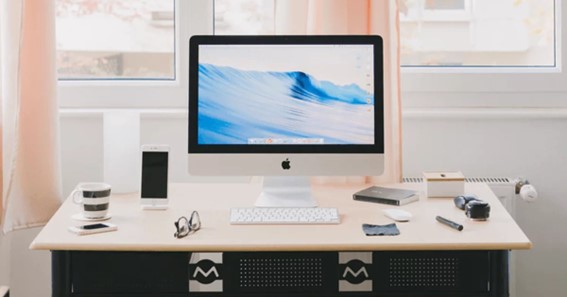Standing desks are gaining popularity for good reasons, as they offer many benefits. First and foremost, using a standing desk can boost your productivity. Studies show that standing desks help reduce the risk of obesity, heart disease, and diabetes. By using a standing desk, you are taking care of your health and well-being while staying focused and efficient at work.
Not only can standing desks improve your physical health, but they can also alleviate muscle stiffness and pain by promoting better circulation. Additionally, standing helps to maintain good posture, which reduces the strain on your neck, back, and shoulders.
If you are tired of feeling sluggish and unmotivated at work, a standing desk might be just what you need. Not only will you be taking care of your health, but you will also be boosting your productivity and getting more done.
Factors to Consider for Different Work Settings
If you are tired of feeling sluggish and uncomfortable while you work, a standing desk could be the solution to your problems. These desks have been shown to offer a range of benefits, from improving posture to increasing calorie burn and energy levels. When it comes to creating a productive work environment, standing desks should definitely be considered.
Research shows that they can reduce back pain, improve circulation, and even lower the risk of chronic diseases. However, it’s not just about physical health. Standing desks can also boost focus and concentration, leading to increased productivity and job satisfaction.
Understanding the Importance of a Standing Desk
Standing desks are gaining popularity in workplaces and home offices as people seek ways to reduce the negative effects of prolonged sitting. However, it’s important to keep in mind that using a standing desk is not a universal solution. Proper attention to ergonomics and posture is necessary to ensure optimal productivity and physical well-being.
Setting Up Your Standing Desk
Properly setting up your standing desk is essential for achieving optimal ergonomics. It’s important to adjust the desk’s height so that your elbows form a 90-degree angle and your wrists remain straight while typing. Additionally, ensure that your computer monitor is at eye level, and your shoulders are relaxed while maintaining a neutral position for your neck.
Maintaining Good Posture
There are additional tips and tricks to maintain good posture while standing. For example, make sure to distribute your weight evenly on both feet and avoid leaning on one side. Additionally, ensure that your feet are flat on the ground and hip-width apart, with your knees slightly bent.
Maintaining proper posture and ergonomics is an ongoing process. It may take some experimentation to find the right setup for your body, and you may need to make adjustments over time. However, by prioritizing your physical well-being and following these best practices, you’ll be able to reap the benefits of a standing desk without sacrificing your productivity or health.
Prioritizing Physical Health
Remember that your body is unique, and what works for one person may not work for another. Don’t be afraid to try different setups and listen to your body’s needs. With some trial and error, you’ll be able to find a standing desk configuration that works best for you. By prioritizing your physical health and taking breaks as needed, you’ll be able to enjoy the benefits of a standing desk while maintaining a productive and healthy work environment.
The Importance of Alternating Between Sitting and Standing
It is essential to alternate between sitting and standing throughout the day. Don’t sit for hours on end without getting up and stretching your legs. Utilize standing desks alongside traditional desks. This will help reduce the negative effects of sitting while also improving your overall health.
It’s important to note that you don’t have to stand all day long. In fact, standing for too long can cause discomfort and pain. So, it’s crucial to gradually increase your standing time and find a balance that works for you.
Movement and Exercise with a Standing Desk
Incorporating movement and exercise into your workday can have a significant impact on your productivity and overall health, especially if you use a standing desk as part of your daily routine. To make the most of your standing desk, it’s essential to incorporate movement into your workday. Simple things like taking short breaks every 30 minutes to stand up, stretch, or walk around can help increase blood flow and energy levels, while also preventing stiffness and fatigue.
Personalization and Standing Desk Use
Personalizing your workspace can work wonders for both your productivity and mood. Using a standing desk is an excellent way to do so. This type of desk lets you adjust the height to your preference, creating a more comfortable and ergonomic workspace. Furthermore, it can help alleviate the harmful consequences of sitting for extended periods.
Add Personal Touches to Your Standing Desk
An excellent option for improving your mood and productivity in the workplace is to incorporate plants and other decorations. Plants can add a natural touch to your workspace while also helping to improve air quality and reduce stress levels. You can also personalize your workspace by adding art pieces or photos to create a comfortable and familiar atmosphere.
By following these simple tips, you can personalize your workspace without compromising its functionality. Not only will it help you feel better while working, but it can also make your space feel more like your own.
Conclusion
In today’s world where most of us spend a significant portion of our day sitting in front of a computer, our physical and mental health often gets neglected. However, with the rise of standing desks, people are starting to prioritize their well-being while maintaining productivity. The benefits of using a standing desk are numerous, from reducing the risk of chronic diseases to improving posture and circulation.
But it’s not just about standing, maintaining proper ergonomics and alternating between sitting and standing is essential for optimal results. Personalizing your workspace with plants, art pieces, and photos can also create a more comfortable and familiar atmosphere, helping to boost productivity and mood.






